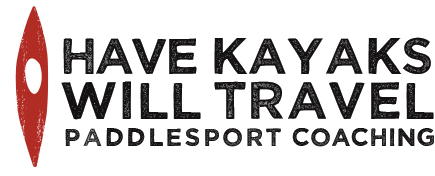There’s nothing like getting together with a group of talented coaches and working on skills none of you yet possesses. Last Friday, Scott Fairty took Paul Redzimski, Wendy Madgwick, Bonnie Perry, Lyn Stone, John Martin and the two of us out on the water for a Canoe Two Star assessment and an update of our old BCU Canoe Safety to the new Foundations of Safety and Rescue. That sounds heady and intimidating, and it might have been if not for Scott’s laid-back style and the enthusiasm of the group.It certainly helped that all of us are experienced paddlers with a general level of comfort on the water in any type of boat. So what if we didn’t yet know our J stroke from our C stroke? We picked them up fairly quickly.Everybody’s learning style was readily apparent. The verbal processors talked through everything prior to trying anything; the kinesthetic learners dove right in–sometimes quite literally. And Scott was the ringmaster, calling out the acts and letting us go at it. Cross-bow stroke. Emptying out a canoe. Or main motivation for the assessment and update was our upcoming BCU Coach One assessment, for which these are prerequisites. What surprised us, however, was how much fun we had learning and demonstrating our new-found skills.Then again, it’s nearly always good to be on (or in) the water.Click here for the full slide...
Signs of Spring: Part 1
Everything’s coming up kayaks. After a winter of paddling mostly indoors, it’s exciting to get out on the lake and rivers again. We’ve paddled on Lake Michigan several times already this year. The water is still cold (about 44 degrees), but if you dress appropriately, it’s not unsafe. In fact, it’s warm enough now that even Sharon is willing to roll and practice rescues. (She draws the line at about 42 degrees.) That’s a sure sign of spring. And there are plenty of benefits to paddling on cold water: there’s almost no boat traffic on the lake, the water in the harbors is still pretty clean, and the rivers tend to have nice currents and features. Jeremy surfing a small wave on the “Mighty” DuPage. This variety of padding is great for skill development. Here in the midwest, where we have no tides, river paddling allows us to experience currents and even small versions of tidal races. We can’t eddy out from behind headlands on Lake Michigan, but we can practice that maneuver on rivers. The only ferrying we can do on Lake Michigan is in response to the wind, but we can practice ferrying to compensate for current on the rivers.We thought about this last benefit on Friday, when we paddled into gusts of 25 to 30 miles per hour on the lake. The wind was out of the south and we were attempting to paddle southwest. If we headed slightly east, we ferried east; if we headed slightly west, we ferried west. The feeling was familiar because we had spent time ferrying on river currents.There are many reasons to train in multiple paddlesports. That’s why the British Canoe Union (BCU) requires coaches to be proficient in more than one discipline. Individual skills may not translate exactly from one paddlesport to another, but the combined knowledge base definitely augments your overall skill, comfort and enjoyment of paddling. It’s good to be back on open...
Tristate paddle
Most of the time, we hear about exciting paddling opportunities after they’re publicized. We aren’t involved in the nitty gritty of organizing them; we’re content to participate.Not so the upcoming Burnham to Marquette Sea Kayak Expedition. We’ve been privileged to help plan this event, sponsored by the Northwest Indiana Paddling Association and spearheaded by its president, Dan Plath.There are a lot of pieces to this puzzle, and Dan has managed to bring together a huge consortium of organizations in support of it. He’s also reached out to paddlers in Indiana and Illinois to map out the route and strategize about how to enable a group to safely paddle it.One of the challenges is finding appropriate put-ins and take-outs along a 50-mile stretch of Lake Michigan’s shoreline. Yesterday, Dan and his fellow Hoosier, Steve Barker, met us, Lyn Stone (of CASKA) , Gary Mechanic (also of CASKA and the Illinois Paddling Council) and Keith Wikle of the West Michigan Coastal Kayakers Association, to explore possible put-ins. Gary Mechanic, Dan Plath, Sharon Bloyd-Peshkin and Steve Barker, pondering the long carry at 31st Street. We began at 31st Street, a beautiful beach with two major drawbacks: a long carry and limestone blocks offshore to break incoming waves. It isn’t the ideal spot for a large group of paddlers to launch, particularly if some of them aren’t experienced.Next we moved to Burnham Harbor. The marina on the west side of the harbor has launch ramps that would be perfect for our purposes, provided we can obtain access to them and the nearby parking. Of the two sites, this was our preference. Alec Bloyd-Peshkin points out the easy access at the Burnham Harbor Marina. All this scouting worked up our appetite for paddling, so we unloaded our boats and got on the water. Dan Plath and Steve Barker carry a boat down to the water. It was a beautiful day. Keith dove right in. Never mind the 40-degree water. Keith Wikle jumped in and scrambled into his boat. Lyn documented the event. We paddled out the harbor and into what had been predicted to be 2- to 4-foot waves but turned out to be 1- to 2-footers at most. Still, we were aware of the added risk of the cold water and kept a watchful eye on each other.Stay tuned for updates on this event. The weather and the water will be warmer. Not only will this be an opportunity to enjoy a long paddle in good company; it should also be a chance to learn about and advocate for a blueway and greenway from the tip of Chicago to the east side of Indiana. And who knows–perhaps it will be the start of...
Close encounters of the encouraging kind
When you kayak on Lake Michigan, the rules of the road don’t count for much. The law of tonnage trumps all. Big boats have the right of way, and little boats stay out of the way.And yet, we have our friends. The other day, we were paddling near Burnham Harbor, scouting launch sites for the upcoming Burnham to Marquette Sea Kayak Expedition and enjoying pretty much having the lake to ourselves, when we noticed a large white powerboat slowly heading right for us. Soon we realized it was a Chicago Police Department boat, and its captain wanted to talk to us. So we paddled toward it.If you haven’t yet had the pleasure of talking with any of the police officers in the CPD Marine and Helicopter Unit, you might not know that these guys are among the friendliest, most helpful cops in the city. They tend to be long-time mariners with a healthy love and respect for Lake Michigan and a serious dedication to keeping people safe on the water.The captain, Roger, immediately recognized that we were capable of taking care of ourselves, so we chatted awhile. “I have to confess, 10 years ago I thought you kayakers were crazy going out here in those little boats,” he said. “But now I’m thinking about buying one and joining you.” So we gave him some local paddling resources, told him we’d be happy to kayak with him, and went our separate ways.We’ve had several similarly positive enounters over the years with the police and Coast Guard. These guys see plenty of drunk powerboaters and oblivious jet skiers. We think they’re relieved when they see knowledgable sailors and kayakers who clearly know what they’re doing and how to keep from getting in trouble. That’s a reputation we want to make sure that our paddling community upholds.Consider, for a moment, the trouble that one novice kayaker caused the entire community when he went over a dam on the Fox River. That incident led to pending legislation to create 350-foot “exclusion zones” upstream and downstream of dams, eliminating portages and effectively making those rivers unpaddlable. (For more information, visit the Illinois Paddling Council.)We have access issues on the lake, too. There is a limited number of put-in and take-out sites on the Chicago shoreline between Memorial Day and Labor Day. There can be heavy boat traffic on the lake and on the Chicago River on warm summer days. Because we are small and human-powered, we rely on good relationships with the authorities when we want to go through the lock between the lake and the river or organize an event like the upcoming Burnham to Marquette expedition.We need to cultivate and maintain these...
Now we understand
It must be for paddling.
Indulging our inner salmon
Here’s something we have in common with salmon: We’ve been in all kinds of wonderful water, but every year we return to the tiny little pool where our love for paddling hatched.OK, we stretched that metaphor to death. But how else can you explain our affection for the dinky little pool where the Chicago Whitewater Association (CWA) teaches 10-week classes every winter and spring?We began as students about seven years ago. That’s where we learned to roll and to control our boats. We gradually became assistants, helping set up gates and move gear. Now we’re able to teach rolling and strokes to a new cohort of kayak enthusiasts and help on the club’s teaching trips every spring on the DuPage, Vermillion and Wolf Rivers.Last night was the final spring pool class in Oak Park–the night of the slalom, in which students are challenged to run through a series of gates, sometimes forward and sometimes backwards, as a test of their new-found paddling skills. John Karch explains the slalom rules: Run all the gates once–some forwards, some backwards– and do a roll or a 360-degree spin at the end before repeating the course once more. Each time you hit a gate, five seconds are added to your time. People get very nervous, but they’re also very supportive of one another. There’s a lot of cheering when someone clears a gate, and groaning when they tap one with their boat or paddle. Bret manages to clear a gate, using his kayak limbo skills. After the instructors run the course, we take down the gates, haul out the boats and go out for pizza. We’ll see one another again in a few weeks, when we embark on the first of the river trips. Mike gives the slalom race two thumbs up. Next stop: actual moving...
First signs of spring
A cluster of canoe paddles beckons wandering canoeists and wayward kayakers. Forget groundhogs and crocuses. The first sign of spring for midwestern paddlers is Canoecopia, the annual paddlesports expo sponsored by Madison-based Rutabaga.Canoecopia is more than a trade show. Sure, it features the expected vendor booths where visitors can try out and try on the latest and greatest gear, from boats and paddles to PFDs, watches, dry bags, wet suits, shoes, camping gear, cooking gear, safety gear and more. They can also browse a comprehensive selection of books and DVDs, and get information from outfitters and resorts, clubs and organizations, camps and magazines. In other words, anyone looking for anything related to paddlesports would find it here. Dr. Danny Mongno, paddle authority extraordinaire, at the Werner Paddle booth. But there’s more to Canoecopia than that. Every hour, there are at least six simultaneous sessions where visitors can learn about paddling expeditions and destinations, get tips about nature photography and backwoods camping, and hear some of the top instructors explain their techniques. Ben Lowry demonstrates rolling on dry land prior to a session in the pool. But honestly, there’s more to it than that, too. For us, Canoecopia is also a chance to connect. We spend part of our time in the hallway, where numerous clubs have tables, talking to passers-by about what our clubs are offering. This year, we were ostensibly representing CASKA (the Chicago Area Sea Kayakers Association) but also promoting the new NWIPA (Northwest Indiana Paddling Association), and encouraging attendance at the upcoming Paddlesports Festival in Aurora, the Chicago Shoreline Marathon, the new Burnham to Marquette Sea Kayak Expedition, and more. At the CASKA booth, Sharon extolls the opportunities to paddle in the Chicago area. Tom Lindblade, president of the Illinois Paddling Council, encourages people to lobby against proposed legislation that would restrict access to Illinois waterways. In addition to reconnecting with old friends — Danny Mongno of Werner Paddles, Kelly Blades of P&H Kayaks, Derrick Mayoleth of Kayak Quixotica, Damon and Sarah Smith of Riverside Kayak Connection and more — we’re always excited to meet new ones. This year, we had the privilege of seeing the premiere of Bryan Smith’s new film, Eastern Horizons, and meeting him and his wife, Lise-Anne (who are four months away from bringing a new paddler into the world). A dry moment caught on camera. Ultimately, for us paddling is much more than a water-based sport. It’s a community, and we thank Rutabaga for helping us reconnect every...
Can we all just get along?
We’re veterans of the whitewater vs. sea kayak wars. Our paddling addiction began with little boats on moving water; we soon moved on to long boats on open water. But we’re basically equal opportunity paddlers who love both kinds of boats, both kinds of water, and both communities of paddlers.Still, we take plenty of ribbing, particularly from the whitewater paddlers who call sea kayaking “flatwater.” That’s obviously just ignorance, but tell that to an obstinate, paddle-wielding playboater. Thankfully, we aren’t thin-skinned enough to take offense, though the taunting has certainly tainted a few post-trip dinner gatherings. Now we’re getting a hard time from the canoeists, who harbor a myriad of misconceptions about kayaks. They think a double-bladed paddle ensures that our boats go straight. (Wrong.) They think we paddle with our arms instead of our torsos. (Wrong again.) But above all, they think we’re a bunch of gonzo goofballs. (You decide.)We understand where they’re coming from, in a way. They mostly encounter inexperienced paddlers in rec boats (which we disdainfully call “wreck boats”) because those are the ones who sign up for the kind of river trips that one of our excellent local canoe organizations, the Prairie State Canoeists (PSC), organizes. These “kayakers” are typically people who’ve purchased inexpensive plastic boats and have gotten little or no instruction, and they cause the serious canoeists no end of frustration as they get stuck in strainers, swamp their boats and struggle on every portage.We feel like Switzerland without the bank accounts. Or maybe we’re too invested in each of them. So when we were invited to write some kayak safety articles for the PSC newsletter, we happily agreed. With the utmost repect for all involved, we’ll reprint them in this blog in the coming days.Here’s how we feel about the mutual lack of admiration, however. We’re all paddlers. If you’re invested enough in whitewater kayaking, sea kayaking or canoeing to learn your strokes and rescues, understand how to read the conditions in which you paddle, and invest in appropriate equipment, you’re part of the club. If you’re too arrogant to take a lesson and too obstinant to purchase appropriate gear, you’re out until you mend your ways.And it’s time that we all just got...
You can teach an old kayaker new tricks
Sharon completes a low brace recovery. This is week three of the solo canoe class. It’s strange and wonderful to be a student again. We experience every lesson on two levels: as students learning new skills, and as instructors fascinated by how other instructors teach.Our paddling skills do and don’t translate. Many of the strokes are familiar but different. Our draw strokes are almost identical, but the canoe pry has no counterpart in the kayak repertoire. The low brace is pretty similar, but the canoe high brace is an act of faith compared to the high brace recovery stroke we do in a kayak (the end of a roll).Open boats sink much more quickly than kayaks containing flotation or bulkheads. And yet the strategies for assisted rescues are quite similar. The canoe folks just discovered the fabulous heel-hook reentry that sea kayakers began using a couple of years ago.Stick around in any paddle sport and you’ll witness techniques evolve. As we learned the high brace, IT (Instructor Trainer) Tom Lindblade noted that the ACA (American Canoe Association) has recently begun recommending a pry stroke instead.We’re enjoying watching another discipline’s instructors adopt and teach techniques that change over time. Alec attempts to roll a...
Can you canoe?
We’ve enrolled in a Solo Canoe class. Stay tuned for photos and reflections as we seek to answer that question in the...







